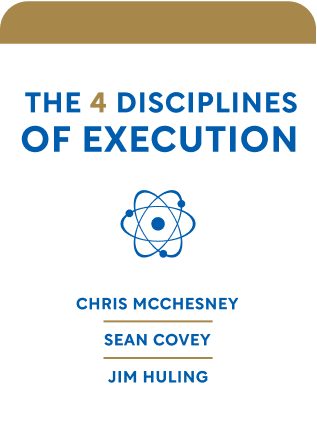

This article is an excerpt from the Shortform book guide to "The 4 Disciplines of Execution" by Chris McChesney, Sean Covey, and Jim Huling. Shortform has the world's best summaries and analyses of books you should be reading.
Like this article? Sign up for a free trial here .
What is the relationship between focus and leadership in 4DX? How does a manager drive the organizational focus?
In 4DX, the first discipline is focus. Leadership has to commit to the focus to be able to achieve the big goals set for the team and the organization.
Keep reading for more about focus, leadership, and the 4DX process.
Focus: Leadership Sets the Example
As a leader, however, you can’t simply focus on one sole thing. You can use different parts of your brain at the same time, just don’t overload them. Think of your brain like an air traffic controller. A controller must be aware of all the planes that are approaching, taxiing, or leaving, but only one of those planes is really important—the one that’s landing at this exact moment. Be aware of all your “planes” (tasks including the whirlwind), but only focus on the landing “plane” (your WIG).
Many leaders understand that focus is important, but still find this discipline hard to put into practice. There are both external and internal forces that make focus and leadership hard to go hand-in-hand. Often the internal forces are more difficult to overcome. Here are the forces:
- Your own nature. As a leader, you’re ambitious and creative, which drives you to do more. You see beyond what others see, and you’re always finding existing things to improve and new opportunities.
- Quest to appear successful. If you try everything, something might work. And if it doesn’t, by taking on so much, you’ve demonstrated a ton of effort, so you look good. Choosing a single goal raises the stakes—if you fail, you don’t have anything to fall back on.
- Difficulty of saying no. Saying no is counterintuitive for leaders, who are by nature people who are looking for opportunities. A further challenge is that opportunities don’t show up all at once. You can’t compare their strengths and weaknesses and choose the best one. When they show up alone, they all look good.
- For example, Apple’s Steve Jobs was very good at saying no. He made a single phone type, the iPhone, instead of the 40 different models his competitors were making.
- Other people’s goals and agendas (particularly those of people above you). You must meet your responsibilities to others as well as yourself. You don’t have any control over how many goals your boss gives you, but you do have control over which goal you choose for a WIG
- Whirlwind. Remember that WIGs are separate from the whirlwind. If you try to turn everything in the whirlwind into a WIG, you’ll be overwhelmed. WIGs require changes in behavior, and no one can change that much at once. Budget 80% of your time and energy to maintaining or slowly improving the whirlwind. Use 20% for your WIGs.

———End of Preview———
Like what you just read? Read the rest of the world's best book summary and analysis of Chris McChesney, Sean Covey, and Jim Huling's "The 4 Disciplines of Execution" at Shortform .
Here's what you'll find in our full The 4 Disciplines of Execution summary :
- The 4 disciplines that can make any strategy a successful reality
- Why a great plan falls apart when you don't think adequately about execution
- The 6 steps you need to scale the 4DX model across an entire organization






